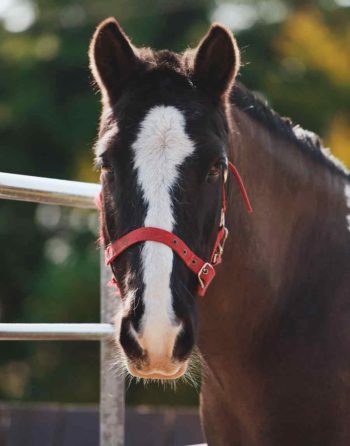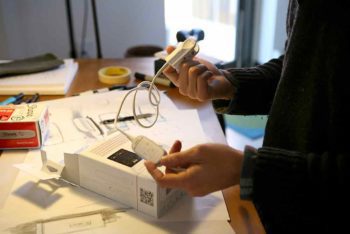1 Mar 2022
Aoife Ryan BVetMed, MRCVS describes the ongoing evolution of medication and practice, and notes that advancements in the field could reduce horse mortality rates.

Equine practitioners are all aware of the inherent risks associated with general anaesthesia in horses.
Many of the statistics quoted by equine clinicians are from the confidential enquiry into perioperative equine fatalities (CEPEF), which is now almost 20 years old1.
The study of 41,824 cases collected from 62 clinics over a period of 6 years found an overall mortality rate of 1.9%, increasing to 7.8% in horses undergoing colic surgery and reducing to 0.9% in healthy horses.
Comparing this to the equivalent small animal study produced 6 years later, dogs and cats have a significantly reduced mortality rate of 0.17% and 0.24% respectively2.
Since these studies have been produced, many advancements have occurred in the approach to sedation and anaesthesia of horses; therefore, these frequently quoted statistics may no longer be appropriate to reference when advising clients of the risk of anaesthesia or sedation.
A team of equine anaesthesia specialists have set out to re-evaluate this risk. Data collection is ongoing; however, preliminary results are encouraging: 8,656 cases have been collected in 6 months from 69 centres worldwide, including universities and private practices.
The overall mortality rate for horses undergoing general anaesthesia was found to be 1%, reducing to 0.6% for non-colic horses and increasing to 3.4% in colics3. The comparatively small number of cases compared to the initial study should be noted, and results should, therefore, be interpreted cautiously, but these findings are exciting for equine practitioners nonetheless.
A number of other interesting findings exist in the reported preliminary results compared to the 2002 study. A current tendency exists to premedicate horses with drug combinations (alpha-2 agonist with or without opioid, with or without acepromazine) as opposed to sole agent therapy.
Halothane, previously a commonly used inhalational agent4 and by far the most commonly used inhalational agent in the initial study, is no longer manufactured. It has since been superseded by isoflurane, which was used for the maintenance of general anaesthesia in 88% of horses in the latest study3.

Sevoflurane is an inhalational agent licensed for use in dogs and cats in the UK, and was used in 8% of horses in the most recent study. Although unlicensed in horses, it has recently been found to be comparable to isoflurane in terms of recovery score and haemodynamic effects5, with another study finding recovery scores to be improved
with sevoflurane6.
Sevoflurane may have further benefits in equine anaesthesia, in that more rapid adjustments in depth of anaesthesia are achievable due to its low blood solubility in comparison to isoflurane.
Furthermore, the global warming potential of sevoflurane across 100 years is 130CO2e, compared to 510CO2e for isoflurane7; therefore, it is possible that sevoflurane use may increase in equine anaesthesia as practices focus on improving sustainability, despite the increased cost relative to isoflurane.
Partial IV anaesthesia (PIVA) is now a commonly used technique (62% of general anaesthesia cases versus 38% pure inhalational agent anaesthesia)3, largely due to multiple reports of PIVA techniques using alpha-2 agonists, lidocaine, ketamine, opioids and benzodiazepines over recent years8,9.
This involves the administration of IV agents as a continuous rate infusion alongside inhalational anaesthesia, reducing the inhalant anaesthetic requirements and providing analgesia depending on the agent used.
Monitoring in equine anaesthesia has improved in recent years, which may contribute to improved patient outcomes3,10.
In the latest study3, 90% of patients had an ECG and a pulse oximeter used, and more than 75% had invasive arterial blood pressure and end tidal carbon dioxide monitored.
Arterial blood gas analysis was performed in approximately 40% of cases, and 70% of these were horses presenting with colic3. Close monitoring of the cardiovascular system allows early intervention if problems are detected. Hypotension (mean arterial pressure less than 70mmHg) is a known contributor to post-anaesthetic myopathy10, the cause of death in 7% of non-colic deaths in the original CEPEF study1; therefore, prompt treatment of hypotension if detected is vital.
Treatment of hypotension involves assessment of depth of anaesthesia and reduction of the vaporiser setting where possible, IV fluid therapy using crystalloids or colloids, and use of inotropes and vasopressors.
Hypoxaemia (arterial oxygen tension of less than 60mmHg, SpO2 less than 90%) while not having been associated with post-anaesthetic myopathy, has other negative consequences including reduced cardiovascular function, organ dysfunction and postoperative reduction in intestinal function11.
It should, therefore, be managed appropriately with adjustment in the inhaled oxygen fraction, ventilation or administration of salbutamol where appropriate12.
Supplementary oxygen via a demand valve can be provided if hypoxaemia is detected.
If blood gas analysis is not available to measure arterial oxygen tensions, pulse oximetry can also be used, although it is less sensitive at detecting subtle changes in haemoglobin oxygen saturation and, importantly, will not accurately reflect tissue oxygen delivery in cases of anaemia or acute blood loss.

Portable pulse oximetry devices are available, allowing the monitoring of oxygen saturation of haemoglobin and heart rate while performing field anaesthesia. A pulse oximeter is a low cost piece of equipment, but provides extremely useful information for field anaesthesia.
In the latest CEPEF study, 0.5% (39 out of 8,656) of cases were performed in the field, although this statistic included standing sedations and is likely an under-representation of true field procedures, due to under-reporting.
In the original CEPEF study1, 25.6% of the non-colic deaths were associated with fractures in the seven days following anaesthesia. Methods of recovering horses have changed significantly since this study, with assisted recoveries using head and tail ropes being the most commonly employed method of assistance, used in 41% of all cases in the latest CEPEF report3. Other options for assisted recovery include hand assistance in small horses or foals, inflated air pillows, tilt tables and recovery pools.
A retrospective study assessing recovery from anaesthesia in horses after exploratory laparotomy found the use of head and tail ropes to be significantly associated with better quality of recovery when compared to
unassisted recovery6.
Assisted recovery of horses requires training of personnel to be effectively employed, and it should be noted that complications can still occur, including facial nerve paralysis, fractures and equipment failure13.
Alpha-2 agonists were administered in the immediate recovery period in 63% of horses in the most recent CEPEF study3, and in a recent systematic review were shown to improve recovery quality14.
For the first time, this study3 reports preliminary mortality rates (0.2%) associated with standing sedation, supporting the notion that there is a risk associated with sedation, although this risk is less than general anaesthesia.
It is now possible to perform many procedures that previously would have been performed under general anaesthesia under standing sedation. This is due to advancements in both surgical techniques and loco-regional anaesthesia.
A recent cadaveric study in horses, assessing an erector spinae plane block, offers exciting potential for analgesia in horses undergoing dorsal spinous process ostectomy or desmotomy15.
This ultrasound-guided interfascial plane block involves the infiltration of local anaesthetic between the erector spinae muscular complex and the transverse process of the thoracic vertebrae, and is used in human medicine for treatment of acute or chronic pain following thoracic, abdominal, hip and spinal surgeries.
So far, in veterinary species it is commonly used in canine patients presenting for spinal surgery16 and has been used to manage a dog with pancreatitis17.
Although further studies are required in equine patients, this study offers exciting potential for advancements in perioperative and postoperative analgesia in horses.
Advancements in equine anaesthesia over the previous 20 years are likely the reason behind the improvements in the reported mortality rates; however, these results should be interpreted with caution given that they are preliminary.
Equine practitioners are strongly encouraged to continue providing data from both general anaesthesia and sedations, including procedures performed in the field.
For further information on the ongoing CEPEF study, including how to report data, visit https://cepef4.wordpress.com